I’m not too proud to admit that I’ve had to walk a bike home with a completely preventable flat tire. I’ve learned since then about the importance of checking your tire pressure.
You should pump up your road bike tires at least once or twice a week, or before every ride if you don’t go out that often. Road bike tires have been known to lose pressure after 4-5 days of sitting still. I’ve been surprised with small leaks before, so I check mine before every long ride regardless of when my previous ride was.
Your tires should be somewhere between 80 and 130 psi. Here is a link to my post about how to pick the right tire pressure for you and your ride.
The pressure in your tires will naturally go down over time, whether they have tubes or are tubeless. Neither system is perfect, and they both slowly leak air. This makes sense because road bikes have very high pressures.
The higher the pressure, the more likely that the air will find a way to leak out. As well, road bike tires have a relatively small volume of air in them. So, even if only a little bit of air has leaked out, it means that a larger percentage of the total air is gone.
The temperature can also affect the pressure in your tires. For a given volume of air, the pressure will increase and decrease along with temperature. So, If you filled up to the right pressure in a cool garage, but you are out riding on piping hot pavement, expect the pressure in your tires to go up.
Thankfully, this doesn’t have a huge affect on the pressure. However, there have been occasions where people left their bikes baking in the hot sun, and their tires popped after getting too hot.
Riding your bike with the right tire pressure is very important. While tuning the pressure within a certain range will get you minimal returns, having a pressure outside of that range can actually cause damage. Riding with a low tire doesn’t just slow you down, it also wear out your tube and tire really fast. If your pressure gets low enough, you’re more likely to puncture the tube than you are to enjoy your ride.
Riding with a low tire doesn’t just slow you down, it also wear out your tube and tire really fast. If your pressure gets low enough, you’re more likely to puncture the tube than you are to enjoy your ride.
All of the different problems really just result in an increased amount of maintenance. You’ll need to buy more tubes, buy more tires, install them yourself, or go to a shop and pay someone to install them for you.
Investing in a cheap floor pump and using it regularly can pay for itself. Plus, taking more control over your tire pressure can result in a more enjoyable and safer ride! Click here to read a post about picking a good tire pressure for your road bike.
My suggestion is that you have a floor pump and you pump up your tires before every ride. Here is a link to check the price on Amazon. Make sure that you pick one with a pressure gauge. Getting it to the right pressure should be straight forward as long as you are paying attention.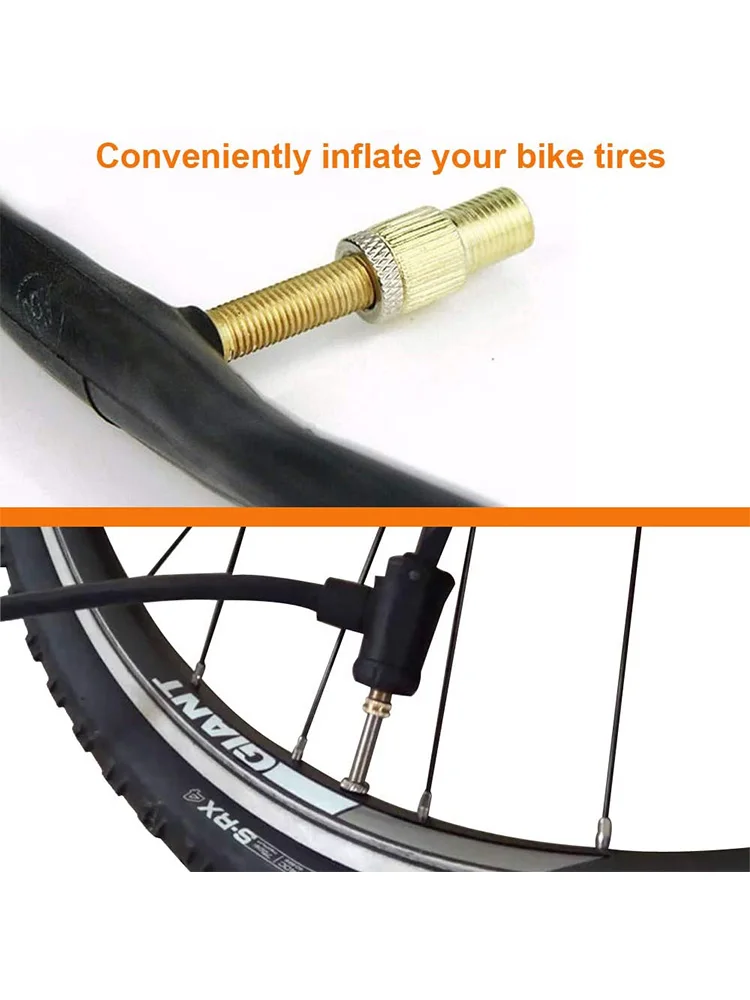
Just remember that you can pop a tire by pressurizing it too much. There are ways to check your pressure without pumping, though.
Compressing the tire, either by pressing hard with a finger or by sitting on the bike, is a fast and free way to check your pressure. It should compress very little under your finger, and a bit more when you sit on it. Not very much, but definitely some.
he ideal amount of “squish” derived by cycling scientists is 15% of the thickness of the tire. That’s hard to eyeball, though. As long as it gives a little bit, but not more than a few millimeters, then you should be okay.
The more official way to check the pressure without using a pump is to get an actual tire pressure gauge. Here’s a link to Amazon to see a few. You just press it onto the valve, and it will show you the pressure while not letting out much air. This is also much faster than setting up an entire pump.
I have a really easy digital one for my car, but I felt like getting one for my bike was more effort than it was worth based on how I get ready for rides.
It just comes down to what your pre- and post-ride rituals look like, and how often you are actually checking the tires. I’d definitely have a gauge if I was checking tire pressures for more than a couple of bikes at once. That is way better than spending the time dealing with passing around one bike pump.
There are also miniature pumps that attach to your bike frame that you can use in if need to replace or inflate your tire while you are out on a ride. If you want one, this one on Amazon comes with a gauge and It has a ton of good reviews. So, I’m confident it’s actually useful and a good deal.
Going online, most people suggest checking your pressure before every ride. I agree. I’ve made it a part of my pre-ride ritual. Sure, it’ll add a minute or two depending on certain things, but it isn’t much. Besides, it can keep me from getting stranded 20 miles from home.
If checking before every ride isn’t your style, I’ve also seen it be suggested that you check one or two times a week.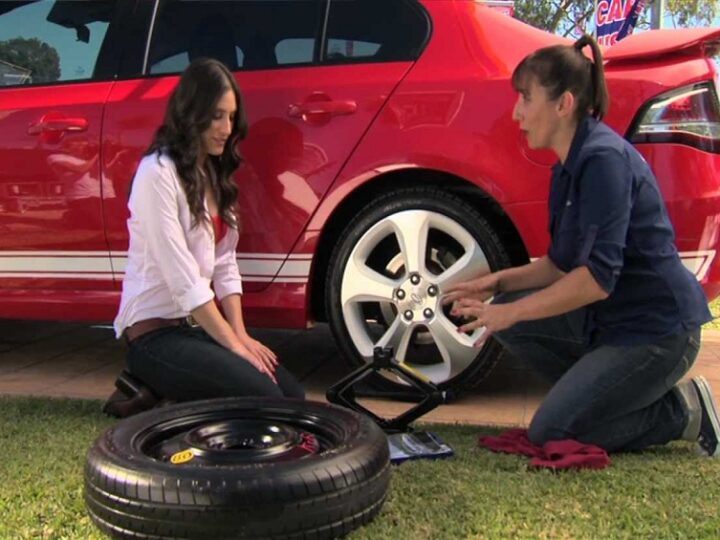 If you aren’t riding far, and you know when you last pumped up, you are pretty safe to just hop on your bike and go.
If you aren’t riding far, and you know when you last pumped up, you are pretty safe to just hop on your bike and go.
Taking the time over the weekend to refresh your tire pressure is also much more reasonable when you have to keep your bike in a shared space. I did this in college when I kept mine in the “bike room” and never ran into problems.
Outside of regular maintenance, here’s where I go over a short, non-exhaustive list of occasions when it would be a good idea to check your tire pressure.

I hope that all of this has given you the confidence you needed to get on your bike without worrying about if you should have checked your tire pressure.
I make content that empowers people to enjoy riding their bikes.
Are you interested in learning more about that?
Here are some hand–picked posts that I think you might find helpful.
Riding and Training,Safety
Bike commuting a one-way distance of at most 10 miles is perfectly respectable. Much more and it can easily become a problem. You’ll need to take more …
Read More
Maintenance
You should always keep your road bike’s tires pressurized to be within the suggested range that is stamped on the side of the tires.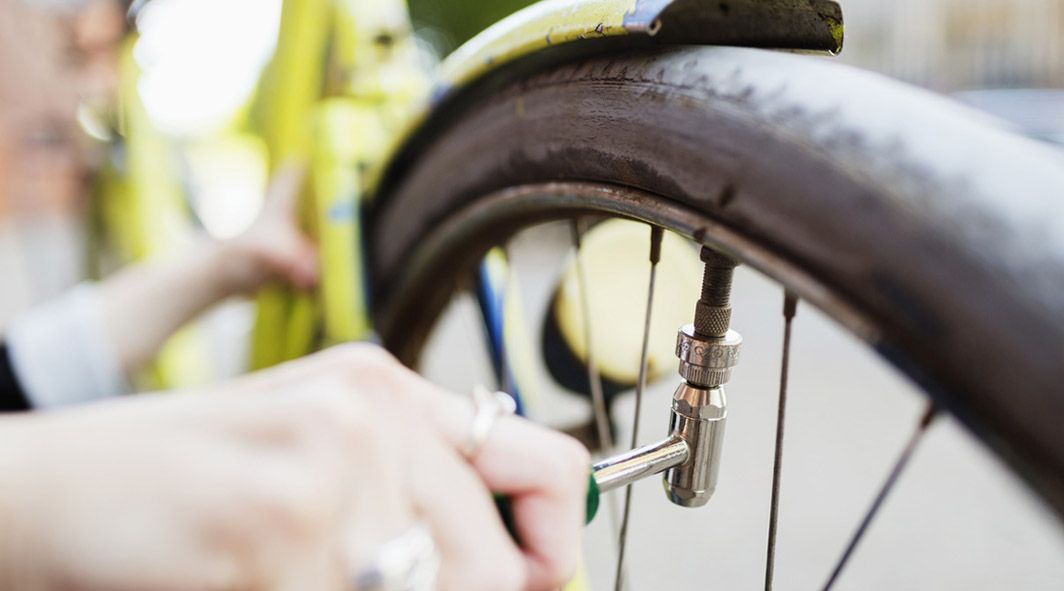 Under-inflating …
Under-inflating …
Read More
The store will not work correctly in the case when cookies are disabled.
JavaScript seems to be disabled in your browser. For the best experience on our site, be sure to turn on Javascript in your browser.
EN FRUS
Search
Search:
To have a safe and enjoyable riding experience, it is absolutely key that the air pressure in your tires is properly adjusted. As the only point of contact with the road, tires can make the difference between a pleasant ride or a nasty fall that could have been avoided.
In addition, the vast majority of punctures, aside from road debris, come from a tire that was not properly inflated. In fact, a tire with too little pressure could collapse on impact and pinch the tube against the rim, causing a flat.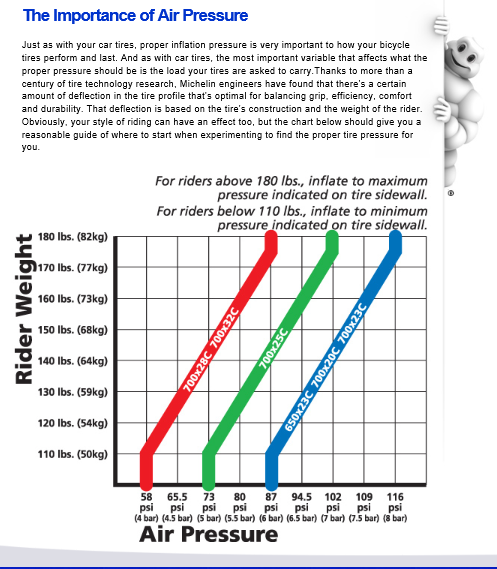
A tire that is overinflated greatly reduces the amount of grip on the road, which could cause the wheels to slip when cornering due to lack of traction. In addition, comfort will also be greatly compromised, as every little vibration or bump in the tarmac will be felt by the cyclist. Fatigue and discomfort will gradually and prematurely eat away your energy and endurance.
Another very important reason to inflate your tires to the appropriate pressure is better rolling resistance, thus increasing the overall efficiency behind every pedal stroke. There will also be a very good balance between comfort and grip: most of the vibrations will be absorbed, the tire will have an optimal amount of grip and most punctures will be avoided. Finally, your tires will have an optimal life span, often exceeding thousands of kilometers before it needs to be replaced. This reduces replacement costs that could have been easily avoided.
Fortunately, knowing how to inflate your tires to the right pressure is easy, quick and doesn't require any special mechanical knowledge. Here's what you need to know before you start.
There are two common types of valve in cycling: Presta and Schrader. The valve model will determine the type of pump nozzle you will need, as they are different in diameter. There is no difference in performance or air retention between the two.
If you are already familiar with the valves found on cars, then you are already able to identify a Schrader valve (pictured on the left). This model is generally common on entry-level bikes or hybrid bikes on the North American market.
Presta valves differ by the fact that its plunger- or tip- must be unscrewed before the tire can be inflated. Most road bikes and mountain bikes are equipped with Presta valves.
Most road bikes and mountain bikes are equipped with Presta valves.
Even though tubeless system does not use an inner tube, a Presta type valve is still installed onto the rim in order to inflate the tire. However, for the same tire size, the amount of pressure will not be the same between a tire equipped with an inner tube and a tubeless tire. We will talk more on this topic a little later in this article.
For Presta valves, the plastic cap is mainly used to prevent the valve from piercing the tube when its bundled up in its box. Therefore, its not essential for the life of the valve and its airtightness to keep the cap once the inner tube is installed in the tire.
Because of the cavity inside the valve, it is recommended to keep the cap on the Schrader valves to limit the accumulation of water and debris. This will increase the life of the valve while making it easier to inflate the tire by having a clean and unclogged valve. If you lose this one, don't panic: the air will not leak, and the valve will still be functional for a long time.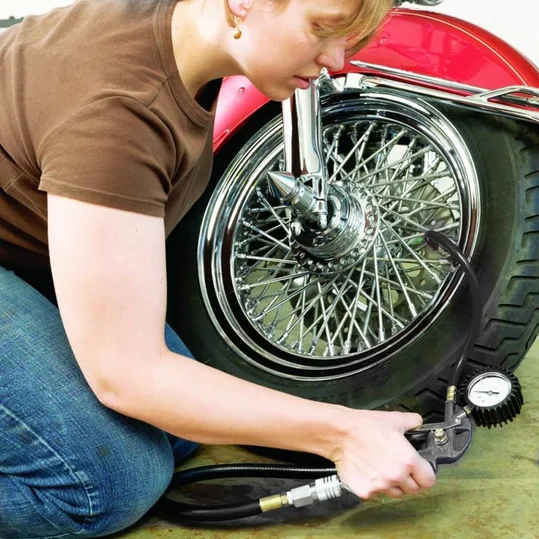
As a preventive measure, before getting on your bike, we recommend that you test the pressure of your tires with your hand to make sure that they have not suffered a slow puncture during the previous ride. If you ride your bike every day, you may not have to inflate your tires every time you ride.
For tires with traditional tubes, we recommend inflating your tires every three to four days if weather conditions are stable. It is important to note that the higher the pressure in your tires, say 100 PSI, the more it will tend to decrease over time. A tire inflated to 30 PSI will be more stable because the stored pressure is much lower. You will have to inflate a high-pressure tire more often to keep it toped-off.
If you have latex inner tubes or tubeless tires, we strongly recommend that you inflate your tires each time you ride. Tubeless tires are known to be less airtight than traditional rubber tubes. They lose air at a faster rate yet are not more prone to punctures.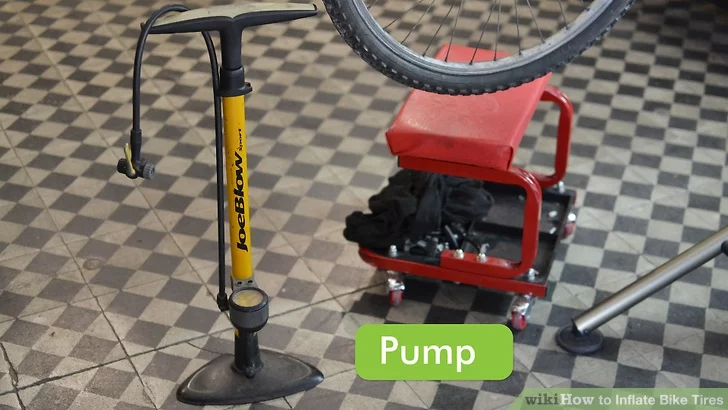
Shop all Type of Tubes
Now that you know the type of valve on your bike, you need a pump that works with it.
Fortunately, most bike pumps are designed with a nozzle that can accommodate both Presta and Schrader valves.
Also, if you only have a pump for the wrong type of valve, don't worry: There are small adapters available made just for that.
By far the most practical and efficient pump, the floor pump will allow you to inflate your tires quickly and accurately. Like the lube for your chain, a trusty bicycle pump is an essential maintenance accessory. Reaching the desired pressure is easy with the built-in gauge. No need to use your thumb to guess!
Hand pump or CO2 cartridge pump should accompany you on your outings to complete your puncture kit. Although they don't provide accurate tire pressure information, they are the lightest and most portable solution while out on the field. The hand pump, although reliable, can take several minutes to inflate a tire because of its small volume.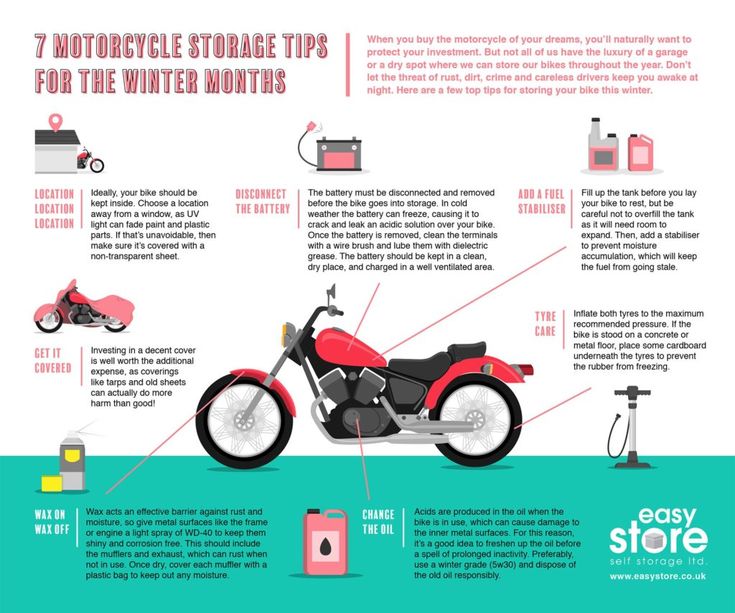
The CO2 cartridge pump can inflate a tire almost instantly. However, the cartridge holds just enough air for one tire. Remember that!
Finally, an air compressor can be used if the flow rate and pressure are well controlled. It is easy to exceed the maximum recommended pressure after only a few seconds. If you don't have a manometer connected directly to the hose, we do not recommend tool to inflate your tires.
Shop all Bike Pumps
The recommended pressure depends on three key factors: the type of road (road, mountain, gravel, etc.) the width of the tire and your weight. So, if you have a road bike and a mountain bike, the tire pressure between the two will be different. Similarly, if you change your tires to a wider or thinner alternative, you will need to change the pressure accordingly.
Similarly, if you change your tires to a wider or thinner alternative, you will need to change the pressure accordingly.
CAUTION : The maximum tire pressure recommended on the sidewall of your tires does not represent the pressure at which you should inflate them. It is a warning from the manufacturer to avoid catastrophic tire failure.
Here are two recommended pressure charts depending on your discipline, your weight, and the width of your tires. These pressures consider the fact that your tires are equipped with an inner tube.
Tire pressure chart based on rider's weight:
Road, Triathlon and Gravel bikes: 700c Wheel (with inner tube)
|
Tire Width/ Rider's Weight |
140 lbs | 165 lbs | 185 lbs | 210 lbs |
|
23 mm |
100 PSI | 110 PSI | 115 PSI | 120 PSI |
|
25 mm |
85 PSI | 95 PSI | 105 PSI | 115 PSI |
|
28 mm |
78 PSI | 85 PSI | 95 PSI | 105 PSI |
|
32 mm |
70 PSI | 75 PSI | 85 PSI | 90 PSI |
|
38 mm |
58 PSI | 63 PSI | 73 PSI | 80 PSI |
|
42 mm |
53 PSI | 58 PSI | 63 PSI | 70 PSI |
Mountain Bike and Fat Bike (with inner tube)
|
Tire Size/ Rider's Weight |
140 lbs | 165 lbs | 185 lbs | 210 lbs |
|
29er x 2. |
30 PSI | 35 PSI | 38 PSI | 42 PSI |
|
29er x 2.3-2.5'' |
28 PSI | 33 PSI | 37 PSI | 40 PSI |
|
27.5'' x 2.2-2.5'' |
27 PSI | 28 PSI | 30 PSI | 32 PSI |
|
27.5'' x 2.6-2.9'' |
24 PSI | 25 PSI | 826 PSI | 28 PSI |
|
26'' x 4'' (Fat bike, Winter conditions) |
6.5 PSI | 7 PSI | 7.5 PSI | 8 PSI |
|
26'' x 5'' (Fat bike, Winter conditions) |
4.8 PSI | 5 PSI | 5.5 PSI | 7 PSI |
If your tires have been converted to Tubeless, i. e. there is no longer an inner tube inside your wheel, you can reduce the pressure by 5 to 10% compared to the pressure recommended above. The great advantage of tubeless tires is that you can reduce the pressure for increased comfort without running the risk of pinching the tube on the rim.
e. there is no longer an inner tube inside your wheel, you can reduce the pressure by 5 to 10% compared to the pressure recommended above. The great advantage of tubeless tires is that you can reduce the pressure for increased comfort without running the risk of pinching the tube on the rim.
Now that you have a good starting point, all the fun of experimentation can begin! Don't hesitate to increase or decrease, by a few PSI, the pressure of your tires to find the perfect balance between comfort, puncture resistance and efficiency.
Quick tip to increase traction and comfort even further: put about 2 to 5 PSI less in the front tire than in the rear tire. Have a great ride!
Whether you’re a seasoned cyclist or casual commuter, or someone who rides on smooth roads, gravel trails or mountain paths, selecting your faithful two-wheeled companion should take into account several criteria; type of riding, surface, intensity and frequency. Here are a few tips to help you choose the perfect bike.
Here are a few tips to help you choose the perfect bike.
There’s more to Canadian bicycle brands than just having a Canadian address. Each bike manufacturer has a flagship bike and a story to tell, keep reading to find out what makes these some of Canada’s top bicycle brands.
{{/thumbnail_url}} A bicycle is a well-thought-out and reliable device. But with improper use, even the highest quality of its elements and systems can fail faster than it would happen naturally. Last but not least, it concerns the wheels. For example, not only the comfort during rides, but also the life of the tires will depend on how much the pressure in the bike’s chambers corresponds to a certain norm . nine0005 If you constantly ride wheels with less than optimal pressure, chances are that cracks have already formed on the sidewalls of your tires. This usually leads to their premature erasure. Available mountain bikes with delivery to your region! Big choice. Best price guarantee. This is a controversial question, the answer to which depends on many factors . First of all, this is the intended terrain on which you plan to ride and the "profile" of the bike. High pressure is preferable if you're riding on tarmac as it gives you excellent rolling, while low pressure gives you solid traction on rough terrain. The style of riding and the weight of the cyclist also matter. Tire manufacturers usually indicate the limits within which the cyclist can vary the inflation of the wheels . In our country, pressure is usually measured in atmospheres (at). This value is approximately equal to such a unit as Bar, which is common in Europe. On American tires and products intended for the American market, the allowable pressure is indicated in Psi. Children's bikes are available with delivery to your region! Big choice. Best price guarantee. Some average tire pressure for a road bike designed for riding on good, smooth roads is 6.46 - 9.18 atmospheres. For a mountain bike, this figure varies from 2.38 to 4.08 atmospheres. For off-road driving, the optimal pressure will be from 2.38 to 3.26 atmospheres. As for the variation within the “limits of what is permitted”, in summer it is advisable to adhere to the lower limit so that the air in the chambers, heating up and expanding, does not damage it. In winter, on the contrary, a chamber pumped up to the upper limit will allow the treads on the tires to adhere more tightly to the surface. The pressure in the chambers must also be correlated depending on the rider's weight . Experts believe that approximately 1% should be added to the average value for each kilo of cyclist weight over 50. The pressure should also depend on the type of rubber . 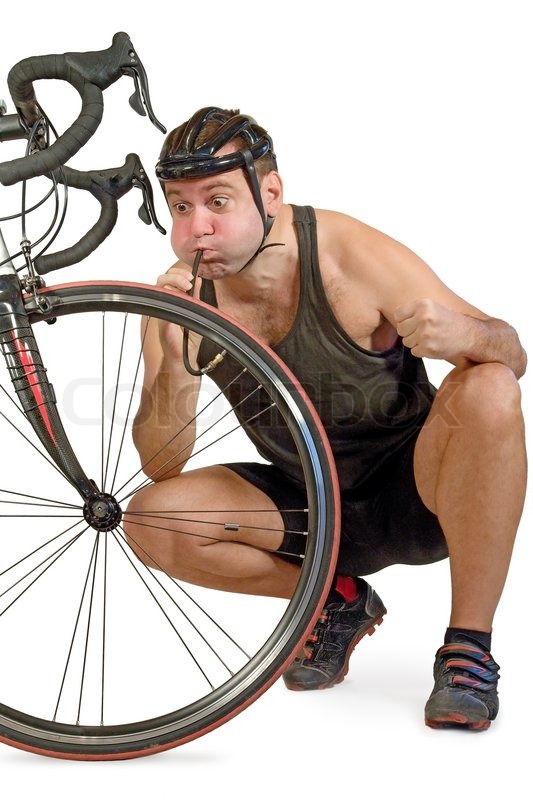 Excessively high pressure increases the risk that the tire will simply burst at the most inopportune moment.
Excessively high pressure increases the risk that the tire will simply burst at the most inopportune moment.  nine0005
nine0005  So, slicks or semi-slicks need to be pumped up almost to the maximum, because they are designed specifically for the maximum diameter. In hot weather, they are allowed to be under-inflated by about a quarter. Cross-country tires are 2-2.3 inches wide and can withstand three to four bar tire pressure. Extreme tires need to be inflated to about average, but for each descent or trick, this value must be varied subtly. nine0005
So, slicks or semi-slicks need to be pumped up almost to the maximum, because they are designed specifically for the maximum diameter. In hot weather, they are allowed to be under-inflated by about a quarter. Cross-country tires are 2-2.3 inches wide and can withstand three to four bar tire pressure. Extreme tires need to be inflated to about average, but for each descent or trick, this value must be varied subtly. nine0005 How to check, measure the pressure in the bicycle wheels
You can measure the pressure in the bicycle chambers using the pressure gauge , on which the atmosphere scale is located. It can be bought separately, or together with a bicycle pump, for example, at VeloSklad. It is also possible to measure the pressure manually, but it is quite difficult to do this, since even with a slight inflating of the chambers, they are already poorly “palpable” with your fingers. It is believed that if the chamber does not shrink under the fingers, then the pressure is normal. But this is an inaccurate method, since everyone's hand strength is different. This art is available, perhaps, only to really experienced cyclists. More accurate data will be told to you at the nearest bicycle service or service station. Experienced cyclists suggest "remember", how many times you need to pump the chamber with your pump to get the optimum pressure.
But this is an inaccurate method, since everyone's hand strength is different. This art is available, perhaps, only to really experienced cyclists. More accurate data will be told to you at the nearest bicycle service or service station. Experienced cyclists suggest "remember", how many times you need to pump the chamber with your pump to get the optimum pressure.
It is advisable to regularly inflate the wheels and control the pressure in the chambers, since air is lost not only through the nipple, but also through the rubber itself. Road bikes and sports bikes need to be pumped up before each ride, road bikes need it at least once a week, mountain bikes once every two weeks, and city bikes no more than once a month. If you regularly monitor the pressure in the chambers, you will extend the life of your bike. nine0005
When buying a bicycle, many do not even think about the fact that the convenience and comfort when riding it is achieved by correctly selected tire pressure. The service life of the bicycle, the speed of riding, the degree of tire wear, safety, control of the two-wheeled friend depends on how the wheels are inflated.
The service life of the bicycle, the speed of riding, the degree of tire wear, safety, control of the two-wheeled friend depends on how the wheels are inflated.
Many cyclists believe that inflating the tires is only necessary for a good bike ride. However, flat tires have a wider area of contact with the road, which means that grip will be better, but it will be very difficult to accelerate to a speed of 30-35 km / h on such tires. nine0005
When inflating your tires, you should always consider the type of terrain or surface you will be driving on. If the walk is supposed to be on an asphalt road, the tire pressure of the bike should be close to the maximum allowable value. Elastic wheels on a flat surface will provide a smooth rolling and high speed of movement.
For riding on rough terrain with unpaved paths, it is better to set the tire pressure to medium tolerable so that you can ride long distances in comfort and convenience. At high pressure, the grip of the wheel with the road will be minimal, respectively, all holes, pebbles, and bumps on the road will be sensitive. And with flat tires, the likelihood of damage to the wheel or puncture of the chamber increases. nine0005
At high pressure, the grip of the wheel with the road will be minimal, respectively, all holes, pebbles, and bumps on the road will be sensitive. And with flat tires, the likelihood of damage to the wheel or puncture of the chamber increases. nine0005
In order to protect yourself on the road, as well as to keep the bike or its individual parts intact, you need to know exactly the lower and upper limits of permissible values, to what pressure the bicycle wheels can be pumped.
Information about tire pressure gives you an advantage when cycling:
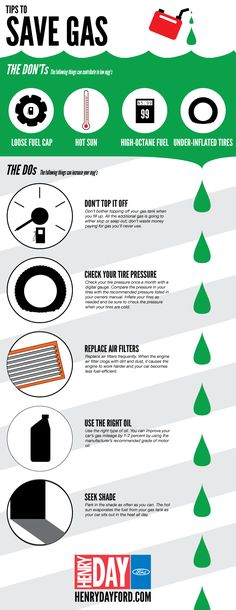
Forget the old "grandfather" way to check the wheel with your fingers. No need to rely on tactile sensations, trying to feel with your hand the degree of rubber penetration on the tire. The air leaves the wheel gradually, through the pores in the rubber. Within 2-3 weeks, the pressure decreases by 0.1-0.2 atmospheres, but you cannot determine this with your fingers. The exact value at any time will help determine the pressure gauge that every cyclist should have in his arsenal. With its help, it is simple, with a minimum error, the level of pressure in bicycle tires is measured. A pump with a pressure gauge (floor or manual) will become an indispensable tool for cyclists. nine0005
There are three standard values in which bicycle tire pressure is measured.
kPa = 14.504 PSI
All these units are used to some extent - in different countries, by different manufacturers. For residents of Russia and the post-Soviet space, the change in bars is more familiar, since this unit is clearly associated with the pressure of the 1st Earth's atmosphere at ocean level. In America and Western Europe, a popular unit is PSI, as they actively use pounds and inches in measurements. Pascals are the least used unit of measurement, but the most modern. Some bicycle manufacturers write data on the wheels about the allowable pressures in all three systems. nine0005
For residents of Russia and the post-Soviet space, the change in bars is more familiar, since this unit is clearly associated with the pressure of the 1st Earth's atmosphere at ocean level. In America and Western Europe, a popular unit is PSI, as they actively use pounds and inches in measurements. Pascals are the least used unit of measurement, but the most modern. Some bicycle manufacturers write data on the wheels about the allowable pressures in all three systems. nine0005
Manufacturers indicate on the sidewall of the tire how many atmospheres to pump the bicycle wheels. Specifies the range within which the owner of the "iron horse" determines the desired values, depending on the specific factors of riding his bike. Values in the range are labeled from min to max, in two or all three dimensions. Numbers up to 10 are atmospheres (or BAR), tens-hundreds are PSI, and six-digit values \u200b\u200band with the prefix “k” / kilo are Pascals. nine0005
When inflating a tire, you must strictly follow the manufacturer's recommendations and try not to go beyond both the minimum and maximum pressure levels indicated on the tire. Moreover, it is better to leave a small margin of 0.2-0.5 BAR, both in one direction and in the other, so that the tire does not burst.
Moreover, it is better to leave a small margin of 0.2-0.5 BAR, both in one direction and in the other, so that the tire does not burst.
The pressure in the wheel is kept by the tire, not the tube, so there is no single standard for its value. There are several significant factors that determine how much you need to pump the wheels on a bicycle. nine0005
The type of tire is determined by the surface of the track on which the cyclist will predominantly ride. Accordingly, the level of inflation of the bicycle wheel will be different. There is a direct dependence on the roughness of the tread and the width of the wheel - the more lugs and the wider the wheel, the lower the pressure should be. Empirically, cyclists quickly determine how many atmospheres should be in the tires of their bicycle
Many cyclists do not realize that air temperature affects the pressure level in bicycle tires. From the course of school physics, we recall that when heated, bodies expand. This means that in hot sunny weather, the pressure inside the air chamber will increase without additional pumping. Conversely, on cold winter days, a decrease in tire pressure is quickly felt due to low temperatures. So, when going for a bike ride in the cold season, the pressure indicators need to be adjusted a little higher than usual, and in the summer heat, let the air out a little. It is worth noting that when going on a bike ride, you should always take into account the weather conditions. nine0005
From the course of school physics, we recall that when heated, bodies expand. This means that in hot sunny weather, the pressure inside the air chamber will increase without additional pumping. Conversely, on cold winter days, a decrease in tire pressure is quickly felt due to low temperatures. So, when going for a bike ride in the cold season, the pressure indicators need to be adjusted a little higher than usual, and in the summer heat, let the air out a little. It is worth noting that when going on a bike ride, you should always take into account the weather conditions. nine0005
It is important to take into account the load on the bike caused by the weight of the rider, especially the fact that most of it is on the rear wheel. Therefore, the degree of its pumping should be slightly higher than the front, the optimal difference is 10%.
To calculate the optimal tire pressure for a bicycle, given the weight of its rider, you can use the table:
Rider weight (kg) Pressure (atmosphere) Pressure (PSI)
The nature, riding style and type of bicycle also affect tire pressure. Buyers who prefer an active pastime often opt for mountain bikes with 26-inch wheels, which ride well both on city streets and in rough terrain.
Buyers who prefer an active pastime often opt for mountain bikes with 26-inch wheels, which ride well both on city streets and in rough terrain.
To understand to what pressure to inflate the wheels of a bicycle, it is necessary to take into account the features of both the bike itself and other, at first glance, weightless factors. For example, weaving threads on a tire, rim thickness, driving style. The likelihood of a tire coming off a wide rim is much less than a narrow rim, because a wider rim will hold the tire better than a thin one. Mountain biking already by its name suggests the presence of a difficult surface on the track, with possible obstacles and bumps. The driving style is more aggressive than on a smooth, calm trajectory, it obliges you to increase the tire pressure to a level slightly less than the upper limit. nine0005
The diameter of the wheel will also influence the selection of the optimal pressure value, since the larger it is, the higher the volume of air pumped will be.